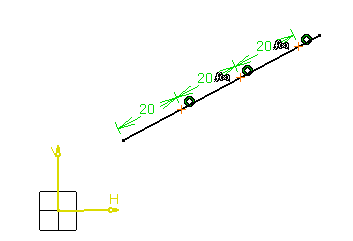Click Equidistant Points
 in the Profile toolbar (Point sub-toolbar).
in the Profile toolbar (Point sub-toolbar).
You can select the line, the spline or the two points
you want to add equidistant points between.
For the purpose of our scenario, select the line.
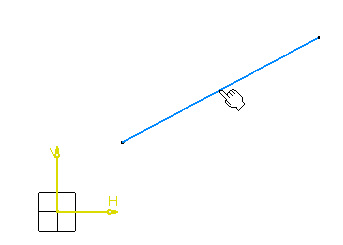
The Equidistant Point Definition dialog box
appears.
By default 10 equidistant New Points are previewed.
By default 10 equidistant New Points are previewed.
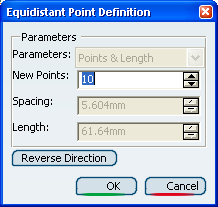
The Reverse Direction button allows you to create the
equidistant points in a reverse direction.
Select one of the extremity points of the line as starting
point.

The Parameters and Spacing fields automatically
become editable. By default, the Points & Spacing parameter
option is displayed.
Set New Points=2 and Spacing=25mm.
- If you use the spinners to modify any value, the point
distribution is automatically updated.
- If you type a value in a field, you have to press the
Enter key to update the point distribution.
The spacing value represents the distance between two consecutive
new points.
If you use the spinners to modify any value, the point
distribution is automatically updated.
If you type a value in a field, you have to press the
Enter key to update the point distribution.
Press Enter if needed.
Two points are displayed and distributed along the line.
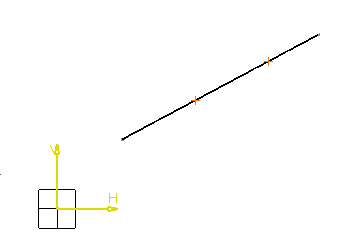
In the Parameters list, select Points
& Length.
Set Length=60mm
The length value represents the distance between the starting point
and the last new point created.
Press Enter if needed.
The point distribution is modified.
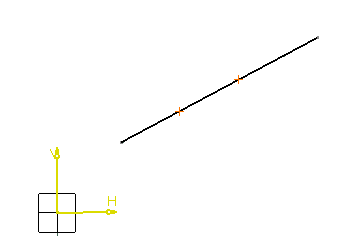
In the Parameters list, select Spacing
& Length.
Keep Spacing=20mm and set Length=90mm.
According to these values, three new points will be created.
Press Enter if needed.
Three new points are now displayed, but the point distribution is not
modified.
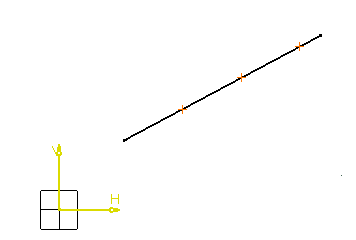
Click OK.
The points are created with their constraints and associated formulas.
